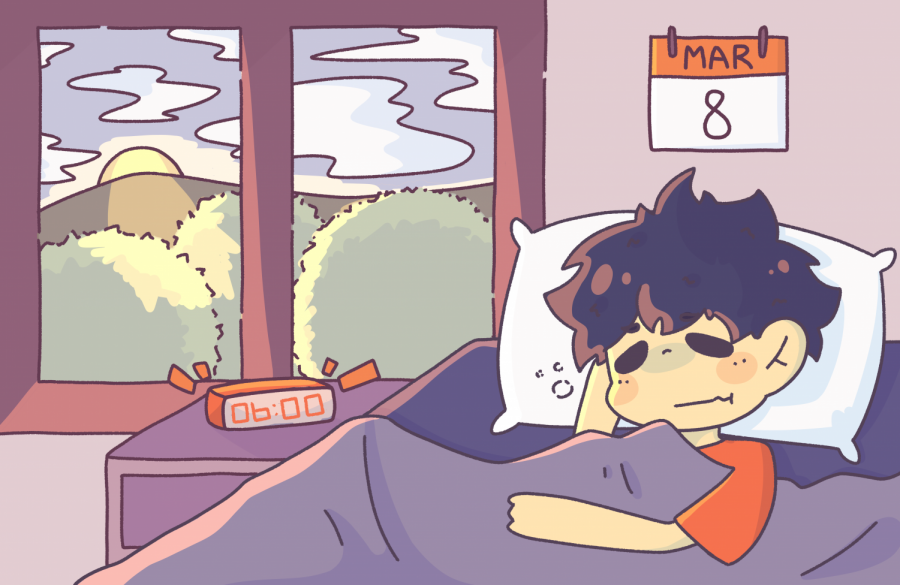Gain an hour, lose an hour, daylight savings causes unnecessary chaos to American lives
Daylight savings can often harm a student’s sleep schedule and productivity.
November 11, 2020
Many people, including students and teachers, dread the time of year when clocks spring forward an hour and some the time of year when clocks fall back. Daylight savings (DST) is a generally disliked practice with no notable benefits and glaring flaws, including a lost hour of sleep and negative health effects. Although originally created in 1918 to save energy and increase productivity, daylight savings is an outdated practice in the U.S. and has no place in modern times.
Daylight savings is commonly recognized as lacking relevance. According to an article from TimeandDate, daylight savings does not actually save energy due to the widespread use of technology and electricity in modern households. The article also states that daylight savings costs money since it decreases productivity and requires computer systems to have built-in daylight savings support. “My understanding is that it doesn’t really help at all,” biology teacher Bessy Albaugh said.
Another con of DST is its disruption of the circadian rhythm, a process regulating the sleep-wake cycle. “It takes away my sleep and I really don’t benefit,” senior Elizabeth Poon said. Richard Montgomery students who have early morning commutes in addition to heavy workloads are even less able to maintain a stable sleep schedule. Although this disruption to the circadian rhythm seems to be a superficial inconvenience at first, it can lead to serious consequences.
According to an article by Popular Mechanics, incidents of heart attack rise by 10 percent during the first days of spring daylight savings. Furthermore, studies have shown a correlation between sleep deprivation at the beginning of daylight savings time and car accidents, workplace injuries, suicide and miscarriages. Considering this information, the dangers of daylight savings truly outweigh the benefits. Mrs. Albaugh also said, “I feel like let’s just not do it anymore…especially if I might die.”
In spite of the multiple disadvantages of daylight savings, some feel neutral or even enjoy daylight savings. “I don’t particularly have any biases towards daylight savings, I just think all of a sudden it gets lighter and darker when it usually isn’t. It doesn’t affect me all that much,” junior Rosemary Yang said. On the other hand, those who actively advocate for daylight savings argue that the benefits include longer days, increased exercise and increased socializing. Some of these points, though, are not necessarily true.
For example, many teachers do not get to experience the benefits of daylight savings, especially during the fall. “As a teacher, someone who goes in at 6 o’clock and then I don’t leave until 4 sometimes, I never see the sunlight. So, for me, [daylight savings is] quite miserable during the fall,” Mrs. Albaugh said. Similarly, people who are committed to the long hours of their job may not have the energy to socialize or exercise after a day of work.
Daylight savings can come with the joy of seeing the sun after work and feeling encouraged to exercise. However, it also comes with a range of negative effects and its benefits do not extend to all. DST does not even accomplish its main goal: to save energy and stimulate productivity. It is time to rid the U.S. of an antiquated, flawed and widely disliked practice and acknowledge the real and potentially deadly repercussions it has on society and individuals.


